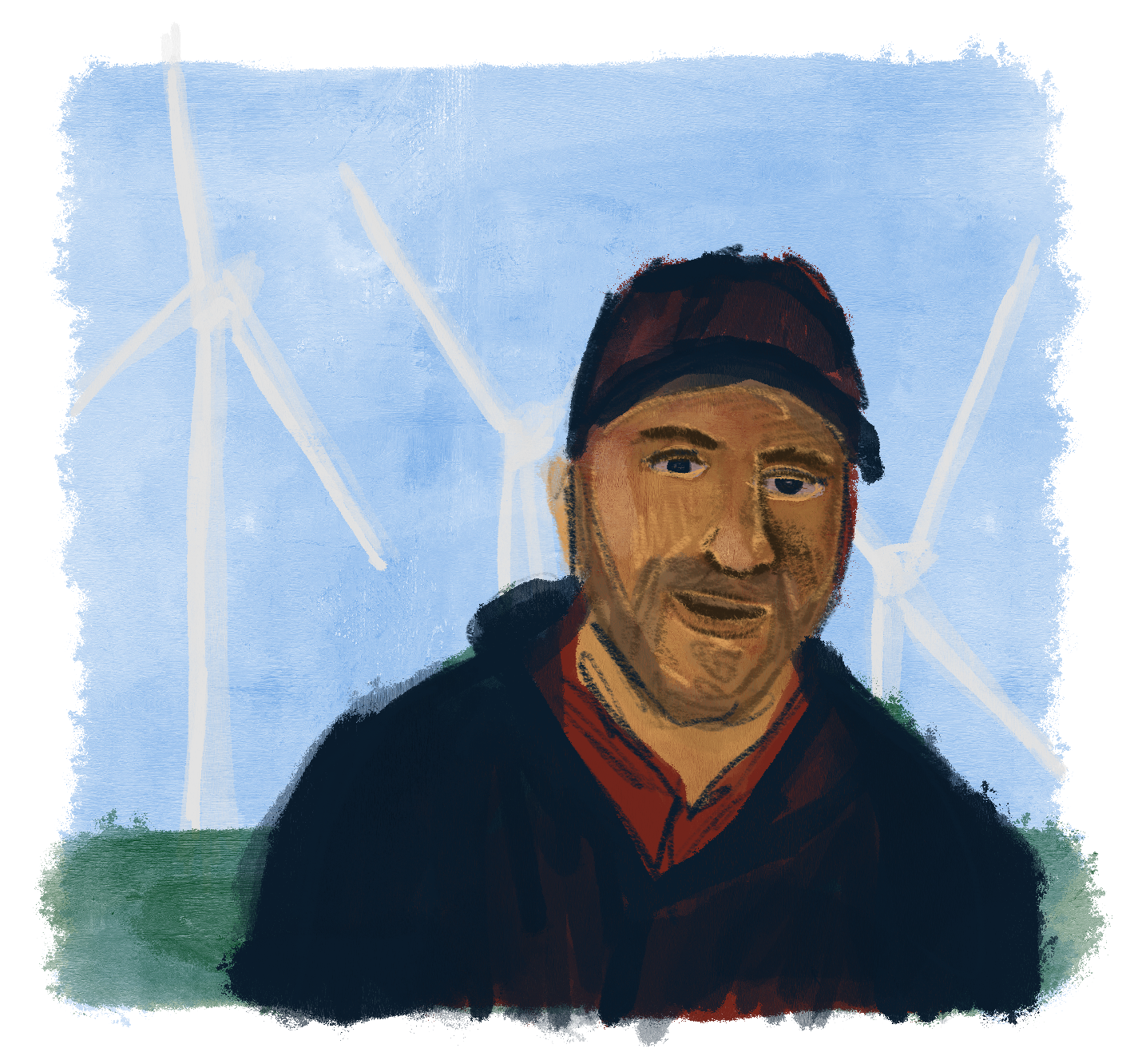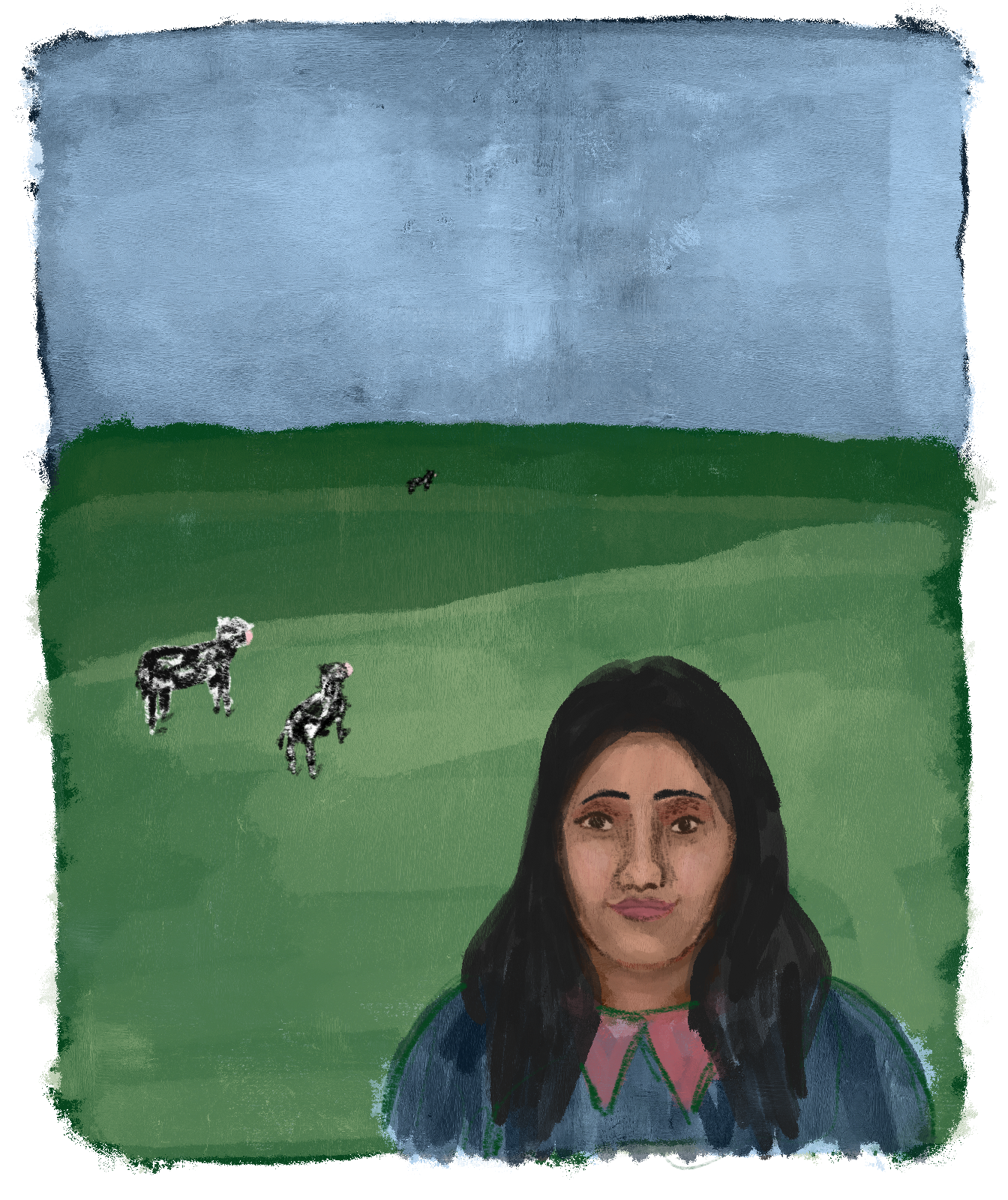The People of Net Zero Canada
“The People of a Transitioning Canada” has always been among our readers’ favorite features in Can We Do It? We continue the tradition in We Did It!? with our new feature “The People of Net Zero Canada.” Who’s doing what in this new era and economy? This month our staff caught up with Jack Finney in Nova Scotia and Deepa Prakash in Ontario.
JACK FINLEY
Electrical Engineer, Halifax, HS
Jack, 25, sits at a picnic table at the Halifax Seaport Farmer’s Market, a stone’s throw from the Canadian Museum of Immigration at Pier 21. It was early so sitting outside, noshing on lobster eggs benny with a nice view of McNabs Island in the mouth of Halifax Harbour is still pleasant before the coming September noonday heat. Jack was off for a few days from his job as a renewable energy engineer in the wind fields when we met. The offshore wind farms have made Nova Scotia a growing renewable energy powerhouse thanks to abundant wind, the completion of the Atlantic Loop in 2030, and the new interties to the US power grid that were finalized in 2038.
Jack is new to Nova Scotia. He’s been working almost six months now at the latest wind farm developed by the Wskijnu’k Mtmo’taqnuow Agency—the Mi’kmaq economic development agency that has been overseeing wind projects since the 2020s. He is tall with a mop of disheveled brown hair and deep-set green eyes. He’s new enough to the Maritimes to still be fascinated by the movement of the water in the harbour.
“I never imagined I’d be way out at the edge of Canada when I was a kid growing up in Calgary. I’m used to mountains and wide-open spaces. Halifax is still surreal to me. I’m going to miss skiing this winter.” Hastily, as if worried his boss might read this profile and get the wrong impression, he added “of course it’s an amazing opportunity to be here…much harder to get this kind of work back home.”
Jack is one of thousands, one young man, one trajectory, in an internal migration to the coast that’s reversing the exodus from the Maritimes that took place 60 years ago when the cod fishery collapsed. The motivation is the same—find a good paying job elsewhere when they’re tapped out at home.
“Everyone is nervous in Calgary. The full collapse of the oil sands is clearly coming, some say it’s already happened. My parents worked in the industry their whole lives and now it’s hard to see it continuing. Dad has contracts for capping and remediating wells. Mom was a technician at the big CCS plant in Fort McMurray that closed in 2044. My parents are just hoping the pensions stay afloat long enough for them to retire.”
While Jack is a stranger to Nova Scotia, his family has roots in the Maritimes. His grandfather John Finney moved to Alberta in 1990 from Newfoundland. He was from a cod fishing family and left just before the fishing ban went into effect, a tough choice that was made time and again throughout Atlantic Canada in the 1990s as the fishery collapsed and the oil sands boomed.
“It’s been great to reconnect with some of the cousins I never met before and hear the stories about Grandpa that he certainly never told me. Seems like the 80s were a wild time, lots of sadness though too.”
Jack’s story is remarkably similar to his grandfather’s, a story of adapting to changing economic fortunes across the provinces. “Grandpa never quite got over the cod collapse and always missed living by the sea, though he built a good life in Alberta. The oil sands were good for my family. Kept us fed and clothed and housed and got me an education. I can’t say I’ll miss them—it’s been too obvious for far too long even to Albertans the damage oil’s done—but you won’t hear me or my family say a bad word about Fort Mac.”
Jack’s journey to the Nova Scotia wind fields wouldn’t have happened without the oil sands. After battling with the Federal government in the 2020s over just transition initiatives, the province itself saw the need to diversify and transition in a serious way after the high emissions oil demand collapse of the early 2030s. Jack benefited from Alberta’s Just Transitions Act of 2032 which provided children of oil patch workers access to discounted education at the province’s universities. He is a proud alum of the University of Calgary’s renowned renewable energy engineering program.
Some critics of the program complain that it’s paying to educate people who leave Alberta, just like Jack. “Yeah, I’ve heard the complaints, but it’s nonsense. I send money back to help my folks and my sister in Calgary. I’m hoping to buy a house there too eventually…if I can make enough here in the wind fields.”
DEEPA PRAKASH
Farmer and Wind Co-op Leader, Aylmer Ontario
Deepa disappears among the herd for a moment, easy to lose even in her bright yellow slicker as the mottled black and white Holsteins ramble in from the fields to the milking barn. Deepa arrived in Canada with her parents and siblings, some of the thousands of clifugees fleeing the deadly South Asian heat wave of 2030. Now 42, she and her family have been running the New Hope farm since 2035.
“We were among the lucky ones in 2030,” Deepa recalled. “We had some financial resources and family here in Ontario already. My mother’s family had farmed for generations and I had just graduated from the Indira Gandhi Krishi Vishwavidyalaya with degrees in Dairy Technology and Agricultural Science. When the farm came available, we jumped at it.”
The farm itself is a model of sustainability. On their 500 acres, the Prakash’s practice regenerative agriculture, receiving credits each year for retention of carbon in the soil, and they use the methane their 150 cows produce, in various ways not discussed in polite company, to run a small-scale combined heat/power plant on the farm—powering and heating the extensive greenhouses that provide year-round vegetables to local community markets. This is especially welcome since the collapse of California’s vegetable production in 2033.
“We’ve seen what climate catastrophes look like. We’ve felt it. We named our farm New Hope because that’s what the world needs and we’re going to do everything we can to show how it can be done.”
This drive for hope extends beyond growing food and producing dairy in sustainable ways. Deepa is also president of the Community Ontario Wind Co-op, a collection of wind turbines spread over 100 farms along the north coast of Lake Erie from Port Stanley to Port Rowan. The 1000 plus wind turbines each generate enough electricity to power around 1000 homes, a crucial resource after the widespread electrification of home heating and transportation completed in the 2030s significantly increased demand for electricity in the province.
“We supply power to a big chunk of Ontario and it’s something we take great pride in—especially since it’s our community providing power for our community.” That’s in fact COW’s motto, which took a page from the community-owned Danish wind co-ops pioneered back in the 1980s. “We make a small profit too, so we’re able to keep investing doing agriculture the right way and keep farms in the area viable.”
COW, established in 2030, found it’s origin story in two fights. The first, ironically, was against the enormously unpopular Green Energy Act of 2009. “Oh, the old timers still talk about that one,” Deepa says with a smile. This false start with catalyzing renewable energy in the province raised hackles in rural Ontario for taking away local autonomy over land and energy. “A lot of folks around here who supported climate action back then still hated the GEA.”
The second conflict came in response to the biofuel push in the late 2020s and early 2030s. The federal and provincial governments started heavily subsidizing biofuel production in the region in the teens and twenties, mostly ethanol from corn. Big oil saw an opportunity too, with Suncor making a big switchgrass play in the area, trying to buy up land when it looked like Canada’s path to Net Zero might rely significantly on biofuel replacing fossil energy.
“It was like the GEA all over again for our communities, except this time it was big business and the government joining forces for the land grab. This was all coming to a head just when we bought New Hope. There were already a couple of windmills on the property, and we jumped at the chance of getting more involved in the co-op.”
The small co-op grew steadily over the decade, with more and more farmers and community groups seeing it as a way to gain energy security and local control in an uncertain era. After the biofuel bubble burst in the late 2030s with Canada’s new renewable dominant Net Zero strategy, COW became one of the major energy players in the region. It remains so today.
“COW got started in 2030 as a way for communities and farmers to fight back, to keep some control over their lands and their futures. This is exactly what my family wanted too after fleeing all the uncertainty where my parents grew up. Now we can’t imagine life without New Hope and without COW. And neither can a lot of Ontarians. We’re proud of that.”
We Did It!? Staff


